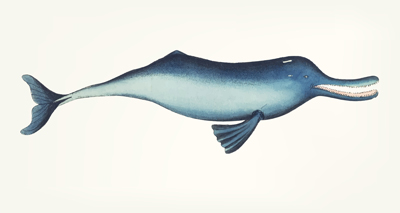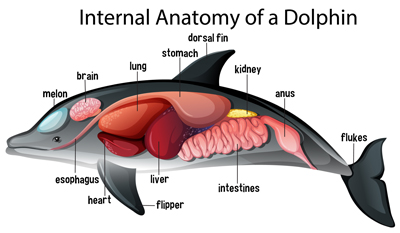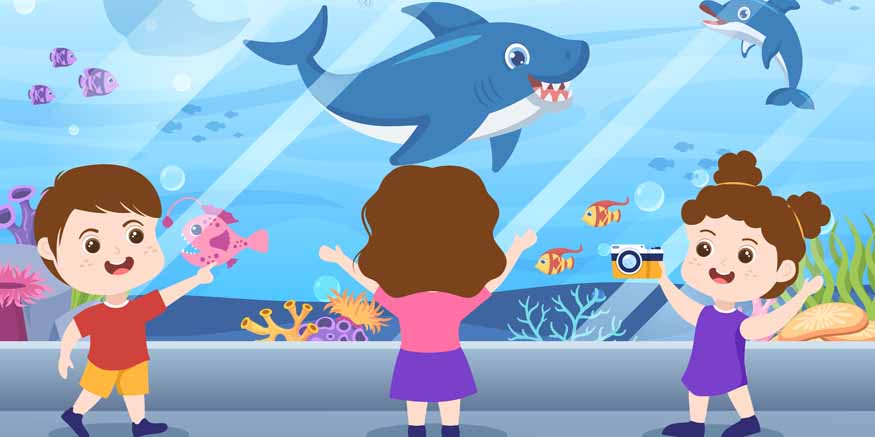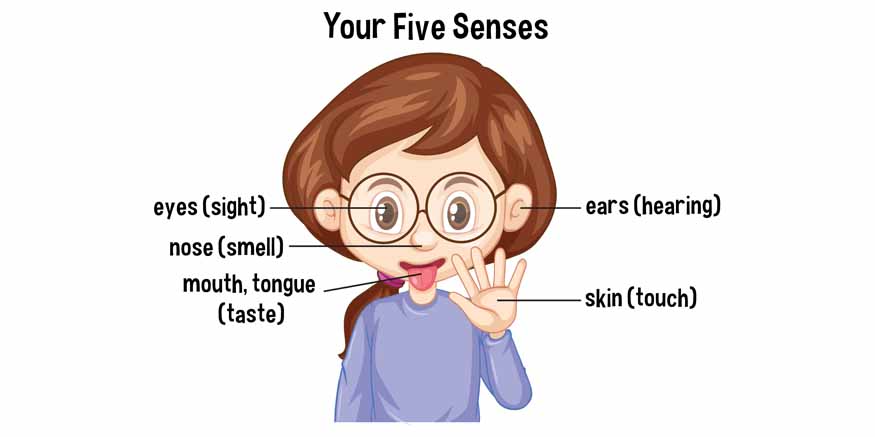Dolphins are some of the most intelligent and friendly aquatic animals. Many love these animals for their playful nature and incredible abilities. Let us dive into the world of dolphins and uncover some fascinating facts that will make you appreciate these amazing creatures even more!
Types of Dolphins
Dolphins belong to the cetacean family and there are around 90 species of dolphins that can be found in nearly every ocean worldwide. The dolphins are mainly divided into two main types: marine dolphins and river dolphins.
- Marine Dolphins: These dolphins live in the seas and oceans and are the most common ones.
Examples include:
- Bottlenose Dolphin: Popular for their friendly behaviour and widespread presence.
- Common Dolphins: Recognisable by their hourglass patterns and found in tropical and temperate waters.
- Spinner Dolphin: Known for their acrobatic spinning leaps out of the water.
- River Dolphins: These dolphins inhabit freshwater rivers and lakes, often with distinct features such as long snouts and smaller dorsal fins.
Examples include:
- Amazon River Dolphin: Also known as pink river dolphins due to their unique colouration.
- Ganges River Dolphin: Found in the Ganges River and its tributaries in India and Bangladesh.

Amazing Dolphin Characteristics
Here are some amazing characteristics of dolphins that make them unique:
- Intelligence: Dolphins are known for their high intelligence. They have large brains relative to their body size and are capable of complex problem-solving, social interactions, and even using tools.
- Communication: Dolphins communicate with each other using a variety of sounds, including clicks, whistles, and squeaks. They also use body language, such as leaping and slapping the water with their tails.
- Echolocation: One of the most fascinating abilities of dolphins is echolocation. They emit sound waves that bounce off objects and return as echoes, helping them to “see” their surroundings, find food, and navigate through the ocean.
- Social Structure: Dolphins live in groups called pods, that range from a few individuals to over a thousand. They form strong bonds with each other and work together to hunt, protect each other from predators, and care for the young.
Fun Dolphin Facts
Here are some fun and fascinating facts about dolphins:
- Dolphins’ One-Eye Sleep: Dolphins have a unique way of sleeping called unihemispheric slow-wave sleep. This means they can rest one half of their brain at a time, while the other half stays awake to look out for predators and continue to breathe.
- Dolphin Rescue Teams: Dolphins are known for their helpful nature. There have been many instances where dolphins have come to the rescue of humans and other animals in distress, guiding them to safety.
- Dolphin Super Speed: Dolphins are incredibly fast swimmers. The common dolphin, for example, can reach speeds of up to 60 km/h (37 mph).
- Dolphins Name Themselves: Dolphins use signature whistles that are unique to each individual, much like human names. These whistles help them recognise and call out to each other.
- Playful Nature: Dolphins love to play! They often ride waves, jump out of the water, and play games with each other, which shows their joyful and curious personalities.
- Dolphins Can Jump High: Dolphins are known for their impressive jumps, called breaching. They can leap up to 4.9 meters (16 feet) out of the water, showing off their strength and agility.
- Long Lifespan: In the wild, dolphins can live for a long time. Some species, like the bottlenose dolphin, can live up to 40-60 years.
- Dolphin Teeth: Dolphins can have up to 100 teeth, but they do not chew their food. Instead, they use their teeth to grab and hold onto their prey, which they swallow whole.
Dolphin Anatomy
To better understand dolphins, let us take a closer look at their anatomy:

Part | Description |
Dorsal Fin | The fin on the dolphin’s back helps with stability and steering. |
Flippers | The fins on the sides of the dolphin’s body are used for steering and balance. |
Fluke | The dolphin’s tail fin provides the main thrust for swimming. |
Blowhole | The opening on the top of the dolphin’s head is used for breathing. |
Melon | The rounded part of the dolphin’s head aids in echolocation. |
Rostrum | The dolphin uses its snout to poke, prod, and explore their environment. |
Protecting Dolphins
Dolphins face various threats in the wild, such as pollution, habitat destruction, entanglement in fishing gear, and hunting. We need to protect these magnificent creatures and their habitats. Here are some ways we can help:
- Reduce Plastic Use: Plastic pollution is a major threat to marine life. By reducing our use of plastic and properly disposing of waste, we can help keep oceans clean and safe for dolphins.
- Support Conservation Efforts: Many organisations work to protect dolphins and their habitats. Supporting these organisations through donations, volunteering, or spreading awareness can make a big difference.
- Responsible Tourism: When participating in dolphin-watching tours, choose operators that follow ethical guidelines and prioritise the well-being of dolphins.
Conclusion
Dolphins are truly fascinating creatures known for their intelligence, playful nature, and incredible learning abilities. By understanding more about them and taking steps to protect their habitats, we can ensure that future generations will continue to admire and appreciate these amazing animals.
For more such informative/interesting blogs, visit Mother’s Pet Kindergarten.













Recent Comments